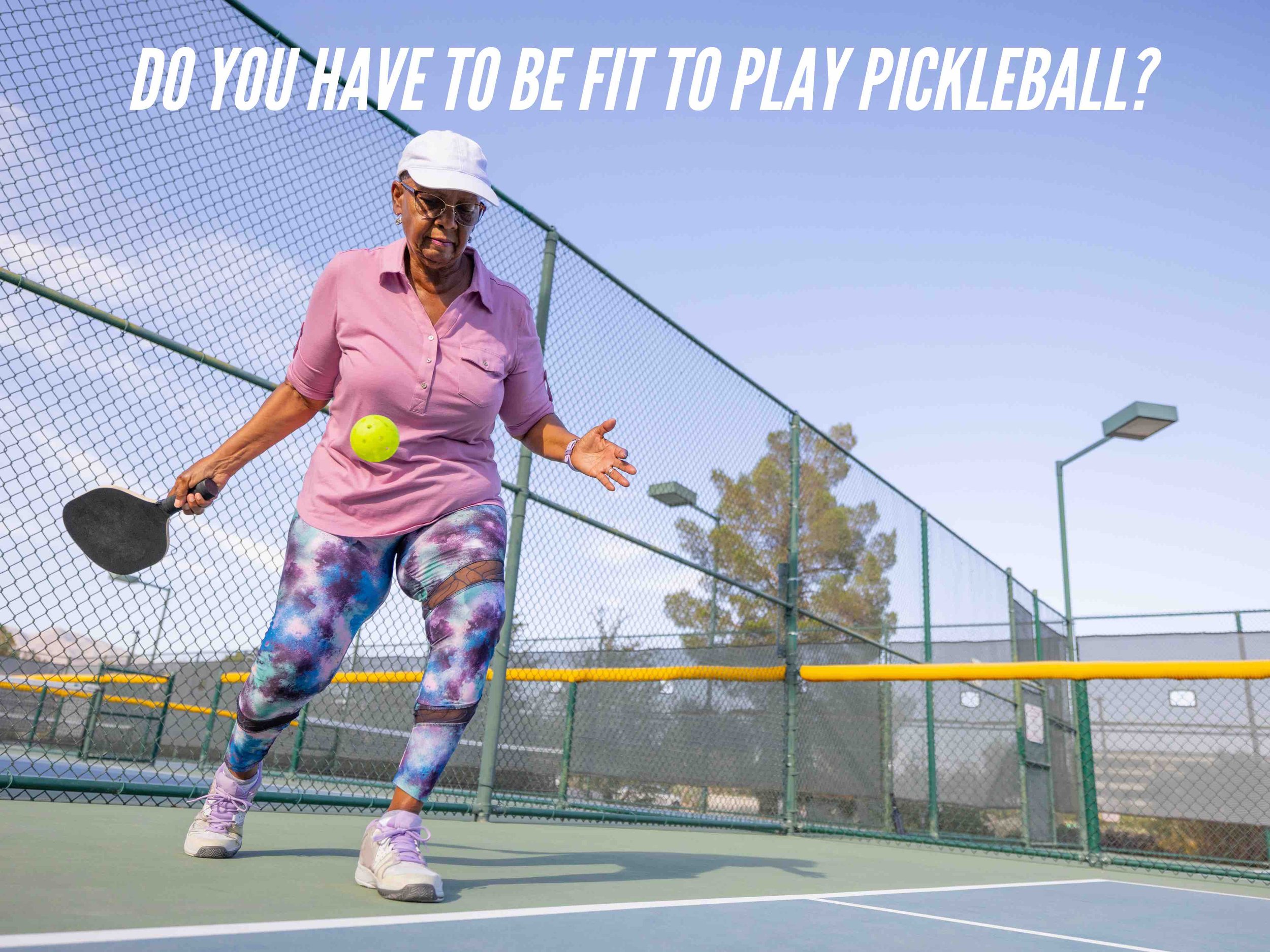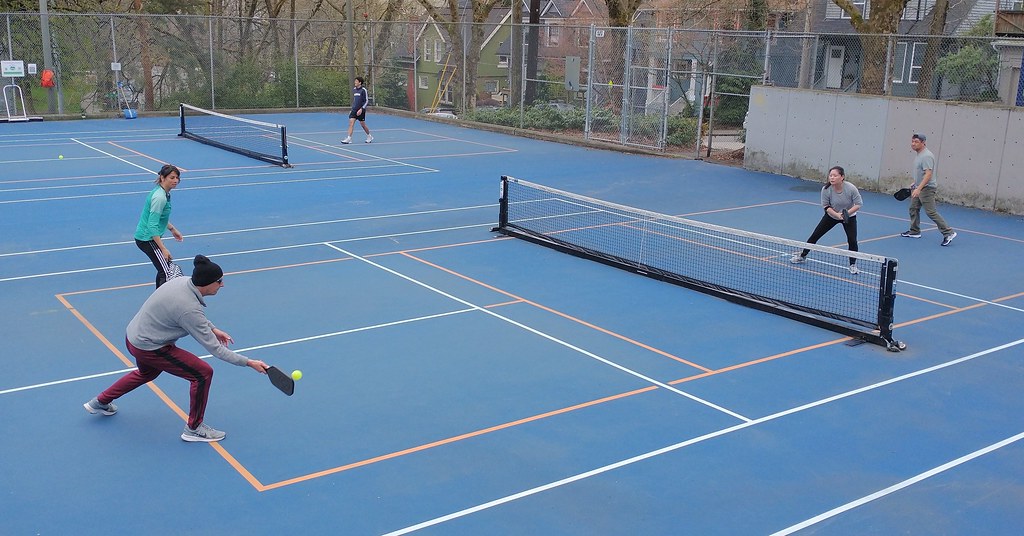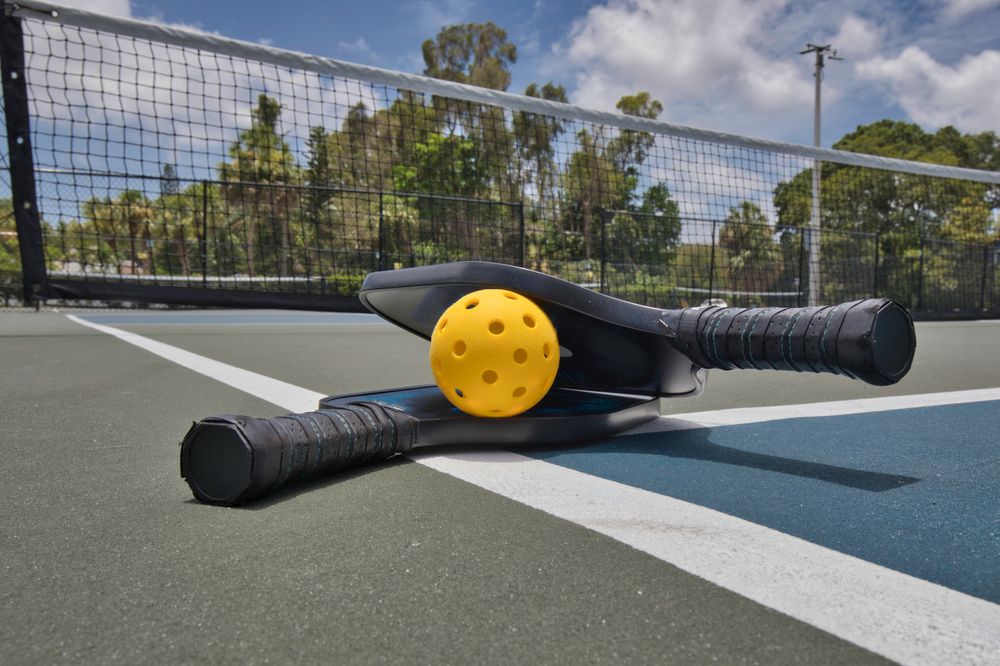Transform Your Space: How to Develop a Magnificent Backyard Pickleball Court in your home
Transform Your Space: How to Develop a Magnificent Backyard Pickleball Court in your home
Blog Article
Transform Your Outdoor Area: How to Layout and Develop Pickleball Courts in Your Residential Yard
Creating a pickleball court in your backyard not just adds worth to your residential property however also gives an unique chance for recreation and social communication. The style and building and construction process can considerably impact the use and pleasure of the court.

Understanding Pickleball Court Capacities
When starting the journey to create a pickleball court in your yard, it's vital to grasp the details measurements that specify a main court. A main pickleball court determines 20 feet large and 44 feet long for both singles and doubles play. Furthermore, the court is separated into two equal halves by a centerline expanding from the baseline to the non-volley area, which lies 7 feet from the web on both sides.
The web itself stands at 36 inches high at the sidelines and 34 inches high at the center, ensuring a consistent playing experience. Surrounding the court, a minimum of 3 feet of barrier area is suggested on all sides to suit gamer movement and to stop injuries throughout gameplay.
For optimal performance, think about integrating correct surface area materials and adequate water drainage solutions when planning your court. The positioning of the court need to likewise be considered to lessen sunshine interference throughout peak playing hours. Recognizing these dimensions is important as they will assist the building and construction process and guarantee that your yard pickleball court meets main requirements for leisure play.
Selecting the Right Area
Selecting an appropriate place for your backyard pickleball court is important to optimizing both enjoyment and performance. The perfect site ought to offer a flat, level surface area to make sure proper drainage and lessen maintenance difficulties. Ideally, a space of at the very least 30 feet wide and 60 feet long will certainly fit the court dimensions while giving area for secure motion around the playing location.
Consider the orientation of the court in regard to the sun. Placing the court east-west can aid minimize glow throughout play, as players will encounter the sun during early morning or late afternoon matches. Furthermore, be mindful of any kind of bordering structures, such as fences or trees, which may obstruct play or create distractions.
Ease of access is one more key aspect; the court needs to be easily obtainable from your home for comfort and celebrations. Ensure there suffices area for seating and spectator areas, enhancing the pleasure for close friends and family alike. Examine regional regulations or community standards to guarantee compliance with zoning legislations and prospective permits, which can affect your project's feasibility. By carefully choosing the location, you will develop a useful and satisfying pickleball court for years to come.
Choosing Appropriate Materials
The choice of materials is vital in the building and construction of a yard pickleball court, as it directly influences playability, durability, and upkeep. When choosing materials, it is necessary to think about both the surface area and the surrounding framework.
For the playing surface area, options such as concrete, asphalt, or specialized sports floor tiles are generally utilized. Concrete offers superb resilience and a consistent playing surface, while asphalt can be a much more affordable alternative. Asphalt might need additional securing to preserve its honesty her explanation over time. Sports tiles supply additional padding and can be customized in color, but their installment may be a lot more intricate.
In terms of bordering facilities, fence is vital for maintaining the sphere within play and preserving her response privacy. Chain-link secure fencing is the most preferred selection, providing visibility while giving essential containment. Furthermore, think about utilizing weather-resistant materials for benches and various other accessories to make sure longevity.
Eventually, the choice of ideal materials should line up with your budget plan, aesthetic preferences, and certain having fun conditions. Investing in high quality products will certainly not only enhance gameplay however also reduce long-term upkeep expenses, permitting years of satisfaction in your backyard pickleball court.
Designing Your Court Layout
After establishing the right products for your pickleball court, the following step involves meticulously intending the court design to maximize both performance and enjoyment. Begin by picking a proper place in your yard, thinking about factors such as sunlight, wind instructions, and distance to other outside attributes. Make certain there is adequate space not just for the court itself but likewise for surrounding security areas.
A typical pickleball court gauges 20 feet vast by 44 feet long for both singles and doubles play. It is recommended to include extra area around the court-- ideally, at least 10 feet on all sides-- to permit for player movement and to prevent crashes. Marking the court measurements precisely is critical; use chalk or string to lay out the location prior to any kind of building starts.
Include ideal viewing angles, especially if you plan to captivate visitors throughout video games. Additionally, here take into consideration the placement of benches or seating locations nearby for players and spectators to remainder. Thoughtful layout preparation will create a welcoming and practical setting that enhances the general experience of playing pickleball in your yard.
Step-by-Step Construction Refine
Building a yard pickleball court involves a methodical building procedure that ensures toughness and optimal playability. The initial step is to prepare the website by removing any kind of greenery, rocks, or particles and leveling the ground. When the location is prepped, outline your court measurements-- 20 feet broad by 44 feet long for increases play-- making use of stakes and string.
Following, excavate the location to a deepness of roughly 4-6 inches, ensuring appropriate drain is integrated. Following this, pour a concrete slab, permitting for a smooth and degree surface area, which is essential for regular sphere bounce.

Verdict
To conclude, the transformation of a property backyard into a pickleball court uses considerable recreational advantages. By sticking to official dimensions and choosing an appropriate location, individuals can produce a welcoming room for recreation and neighborhood interaction. The option of sturdy products, thoughtful layout, and correct construction methods additionally boost the performance and long life of the court. Inevitably, this undertaking promotes a lively atmosphere for household and buddies to take pleasure in the expanding sport of pickleball.

Choosing an ideal place for your backyard pickleball court is important to optimizing both pleasure and functionality.After establishing the appropriate products for your pickleball court, the following step involves very carefully planning the court design to maximize both capability and pleasure.Structure a yard pickleball court involves a systematic building procedure that makes certain sturdiness and ideal playability.
Report this page